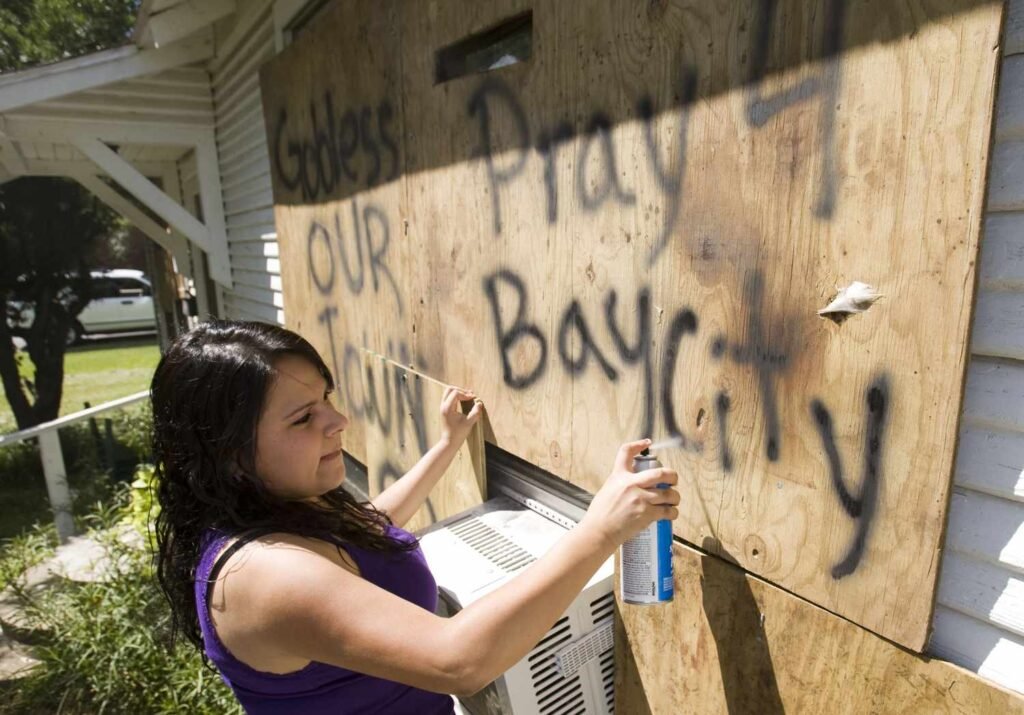:max_bytes(150000):strip_icc():format(jpeg)/GettyImages-1258973324-37245cfd92354fc3af10a919ea3971c6.jpg)
If you live in a hurricane zone, be sure to update your home insurance long before a storm threatens your area. Once the National Hurricane Center names a storm, it’s usually impossible to change your home insurance policy.
According to a report from insurance company Aon, natural disasters accounted for $313 billion in economic losses in 2022, with insurance companies covering just 42%. To minimize financial risk, ensure that you have appropriate insurance coverage before the next storm.
Key Takeaways
- A standard home insurance policy does not provide all the hurricane protection you need.
- People living in hurricane zones also need flood insurance and may need windstorm insurance.
- Once a tropical storm receives a name, you likely can’t make changes to your insurance because insurers typically issue moratoriums.
- Some policies have “named storm” deductibles that require you to cover a percentage of related damages out of pocket.
- Even with hurricane season underway, you may still have time to review your coverage, update your home inventory, and consider a standalone flood policy.
Does Home Insurance Cover Hurricane Damage?
A standard home insurance policy covers some hurricane damage, but it likely won’t provide all the protection you need.
Generally speaking, standard homeowners policies cover:
- The physical structure of your house
- Personal belongings
- Personal liability
- Additional living expenses
Basic coverage provides reimbursement for expenses related to rebuilding a home, replacing its contents, and additional living costs if you’re displaced by a disaster. But standard home insurance usually only covers wind-related storm damage, and even then, you may encounter caveats. For instance, residents of hurricane-prone areas might have a separate windstorm deductible. Some may be required to buy a separate windstorm insurance policy.
Plus, standard home insurance policies exclude coverage for flood damage to the home or its contents, meaning you’ll have to cover those losses out of pocket following a storm.
Can I Change My Home Insurance Coverage Before a Hurricane Strikes?
Maybe, but timing is crucial.
“When a named storm is forecasted, insurance companies will typically issue moratoriums, meaning that no new policies can be purchased in a specific area, no changes can be made to existing policies, and changing insurance companies is not allowed,” said Jesse Kohlbecker, vice president of claims and client services at COUNTRY Financial. “Once the storm is over, the moratorium will be lifted.”
Named Storm Deductibles
We identify hurricanes by human names. For example, in 2024, Hurricane Helene wreaked havoc on the southeastern U.S. and southern Appalachians.
The World Meteorological Organization creates a storm name list annually, and tropical storms receive their names when their sustained wind speed reaches 39 mph. When wind speeds reach 74 mph, forecasters reclassify the storm as a hurricane.
Besides moratoriums on policy changes, insurers may also apply special deductibles on damages caused by named storms. Typically, named storm deductibles are calculated as a percentage of your home’s insured value, and range from 1% to 10%. So, if your policy imposes a 5% named storm deductible, and you’ve insured your home for $200,000, you must pay up to $10,000 out of pocket.
This deductible varies by provider and can apply to each storm event, calendar year, or storm season. Currently, 19 states and Washington, D.C., allow insurers to impose named storm deductibles.
How to Prepare for Hurricane Season
Make Sure You Have the Right Amount of Coverage
“Begin by discussing your existing coverage with a seasoned agent or licensed public adjuster,” said Jordan Blake, director of communications and operations at Shoreline Public Adjusters. “Ensure that you have replacement cost coverage, not just actual cash value. Add ordinance or law coverage if it’s missing. This helps pay for code upgrades if you’re forced to rebuild.”
Important
Replacement cost home insurance covers the full cost of repairing damaged property, while an actual cash value policy deducts for depreciation—meaning, you get less than what you paid for the property.
Create a Current Inventory of Your Home’s Contents
“Taking a video can be a much faster way to complete a home inventory,” said Kohlbecker. “Try breaking up the video room by room, use narration, and describe what you’re filming. The more detailed you are, the better.”
Record serial numbers and back up your documentation in a cloud storage account or by emailing it to yourself, in case your cellphone and computer don’t survive the storm.
Consider Flood Insurance
Separate flood insurance is critical if you’re in a hurricane zone. You can purchase a policy from private insurance companies or through the National Flood Insurance Program (NFIP).
Important
Typically, NFIP policies impose a 30-day waiting period before they take effect, so purchase a flood insurance policy before hurricane season.
The Bottom Line
To protect your home and its contents, act before hurricane season or the next storm. Purchase flood insurance, and increase coverage for your home’s structure and its contents if needed. Update inventory documentation and store it in a safe place. Once a tropical storm receives a name, it’s likely too late to change your insurance coverage.

